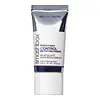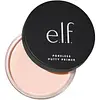What's inside
What's inside
 Key Ingredients
Key Ingredients

 Benefits
Benefits

 Concerns
Concerns

 Ingredients Side-by-side
Ingredients Side-by-side

Polyglyceryl-3 Disiloxane Dimethicone
Skin ConditioningPolyglyceryl-3 Polydimethylsiloxyethyl Dimethicone
Skin ConditioningIsohexadecane
EmollientEthylhexylglycerin
Skin ConditioningIsopropyl Isostearate
EmollientPPG-15 Stearyl Ether
EmollientLauryl Methacrylate/Glycol Dimethacrylate Crosspolymer
Trimethylsiloxysilicate
EmollientAcrylamide/Sodium Acryloyldimethyltaurate Copolymer
Emulsion StabilisingPolysorbate 80
EmulsifyingDisodium EDTA
Silica
AbrasiveHydroxyapatite
AbrasiveBHT
AntioxidantTocopheryl Acetate
AntioxidantTocopherol
AntioxidantBenzoic Acid
MaskingPotassium Sorbate
PreservativeSodium Dehydroacetate
PreservativePhenoxyethanol
PreservativePolyglyceryl-3 Disiloxane Dimethicone, Polyglyceryl-3 Polydimethylsiloxyethyl Dimethicone, Isohexadecane, Ethylhexylglycerin, Isopropyl Isostearate, PPG-15 Stearyl Ether, Lauryl Methacrylate/Glycol Dimethacrylate Crosspolymer, Trimethylsiloxysilicate, Acrylamide/Sodium Acryloyldimethyltaurate Copolymer, Polysorbate 80, Disodium EDTA, Silica, Hydroxyapatite, BHT, Tocopheryl Acetate, Tocopherol, Benzoic Acid, Potassium Sorbate, Sodium Dehydroacetate, Phenoxyethanol
Water
Skin ConditioningCyclopentasiloxane
EmollientCeresin
Emulsion StabilisingDimethicone
EmollientGlycerin
HumectantHydrogenated Polyisobutene
EmollientHdi/Trimethylol Hexyllactone Crosspolymer
Polymethylsilsesquioxane
Trimethylsiloxysilicate
EmollientPropylene Glycol
HumectantLauryl PEG-10 Tris(Trimethylsiloxy)Silylethyl Dimethicone
EmulsifyingSodium Chloride
MaskingCamellia Sinensis Leaf Extract
AntimicrobialSqualane
EmollientOryza Sativa Bran Wax
Skin ConditioningDimethicone/PEG-10/15 Crosspolymer
Dimethicone Crosspolymer
Emulsion StabilisingSilica
AbrasiveTriethoxycaprylylsilane
Talc
AbrasiveButylene Glycol
HumectantDisodium EDTA
Caprylyl Glycol
EmollientEthylhexylglycerin
Skin ConditioningPhenoxyethanol
PreservativeCI 77891
Cosmetic ColorantIron Oxides
Water, Cyclopentasiloxane, Ceresin, Dimethicone, Glycerin, Hydrogenated Polyisobutene, Hdi/Trimethylol Hexyllactone Crosspolymer, Polymethylsilsesquioxane, Trimethylsiloxysilicate, Propylene Glycol, Lauryl PEG-10 Tris(Trimethylsiloxy)Silylethyl Dimethicone, Sodium Chloride, Camellia Sinensis Leaf Extract, Squalane, Oryza Sativa Bran Wax, Dimethicone/PEG-10/15 Crosspolymer, Dimethicone Crosspolymer, Silica, Triethoxycaprylylsilane, Talc, Butylene Glycol, Disodium EDTA, Caprylyl Glycol, Ethylhexylglycerin, Phenoxyethanol, CI 77891, Iron Oxides
 Reviews
Reviews

Ingredients Explained
These ingredients are found in both products.
Ingredients higher up in an ingredient list are typically present in a larger amount.
Disodium EDTA plays a role in making products more stable by aiding other preservatives.
It is a chelating agent, meaning it neutralizes metal ions that may be found in a product.
Disodium EDTA is a salt of edetic acid and is found to be safe in cosmetic ingredients.
Learn more about Disodium EDTAEthylhexylglycerin (we can't pronounce this either) is commonly used as a preservative and skin softener. It is derived from glyceryl.
You might see Ethylhexylglycerin often paired with other preservatives such as phenoxyethanol. Ethylhexylglycerin has been found to increase the effectiveness of these other preservatives.
Phenoxyethanol is a preservative that has germicide, antimicrobial, and aromatic properties. Studies show that phenoxyethanol can prevent microbial growth. By itself, it has a scent that is similar to that of a rose.
It's often used in formulations along with Caprylyl Glycol to preserve the shelf life of products.
Silica, also known as silicon dioxide, is a naturally occurring mineral. It is used as a fine, spherical, and porous powder in cosmetics.
Though it has exfoliant properties, the function of silica varies depending on the product.
The unique structure of silica enhances the spreadability and adds smoothness, making it a great texture enhancer.
It is also used as an active carrier, emulsifier, and mattifier due to its ability to absorb excess oil.
In some products, tiny microneedles called spicules are made from silica or hydrolyzed sponge. When you rub them in, they lightly polish away dead skin layers and enhance the penetration of active ingredients.
Learn more about SilicaThis silicone is an emollient. Emollients create a thin film on the skin to prevent moisture from escaping.
It is not soluble in water and helps increase water-resistance in products.
According to a manufacturer, it can blend seamlessly with silicone oils, such as Cyclopentasiloxane.
Learn more about Trimethylsiloxysilicate